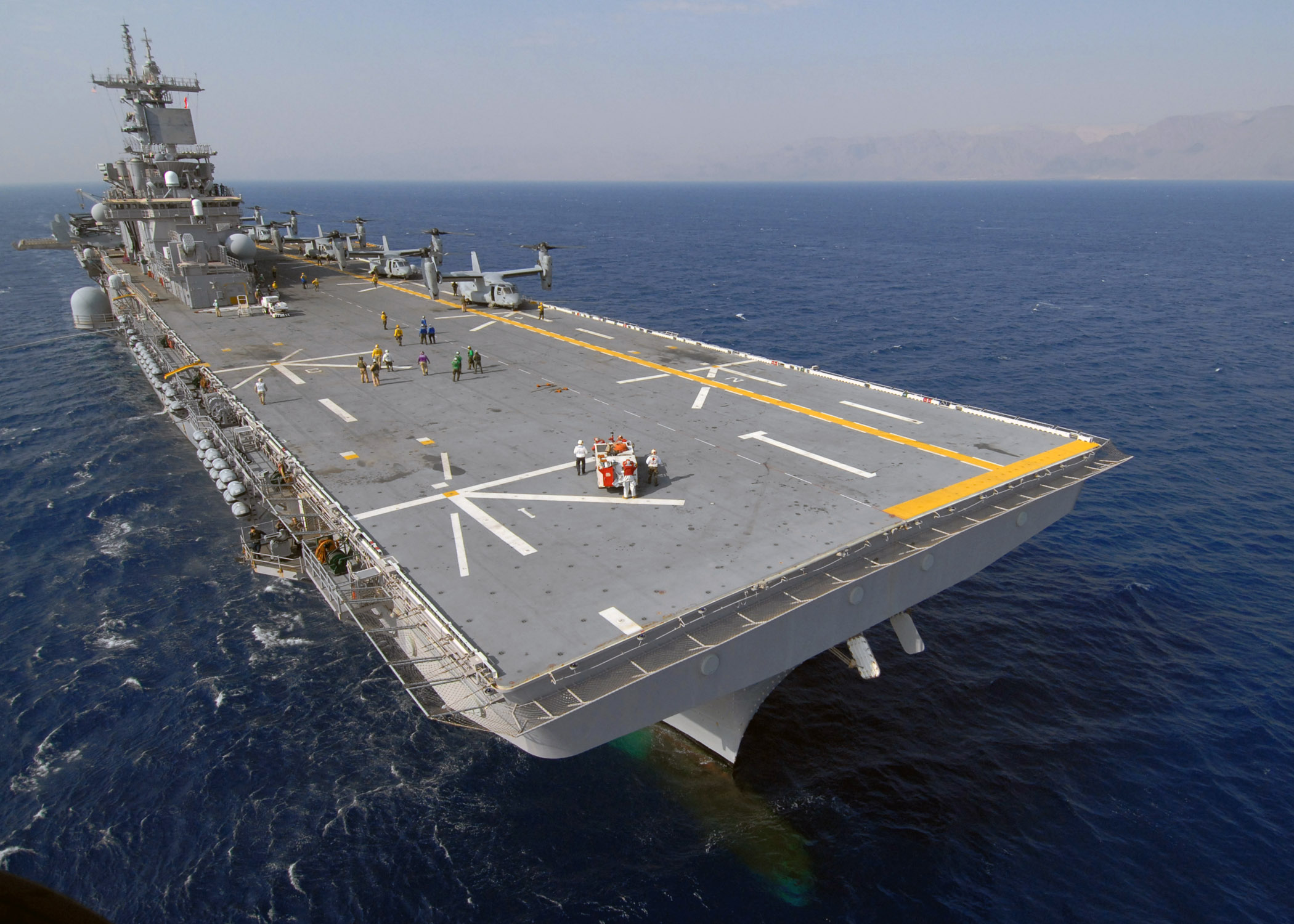

Japanese Defence Minister Itsunori Onodera has said that Tokyo is to consider the purchase of at least one amphibious assault ship.
"We are intending to acquire a transport ship capable of promptly sending out Self-Defense Force (SDF) units on missions to defend Japan's remote islands," Onodera told reporters after inspecting the Wasp-class assault ship USS Makin Island (LHD 8) at the US Navy's San Diego base on 7 July.
"It's a multifunctional transport ship capable of providing assistance in a timely manner when a major disaster breaks out," he said.
The Japanese Maritime Self-Defense Force (JMSDF) already operates three Osumi-class tank landing ships (LST), JS Osumi , JS Shimokita and JS Kunisaki , which all have a well deck embarking two Landing Craft Air Cushion (LCAC) hovercraft and a parking deck that can embark land vehicles.
Access is via lifts to the main deck or a ramp on the starboard side. The main deck is split between space for more land vehicles and a large helicopter landing pad aft the superstructure.
The Japanese Ministry of Defence confirmed to IHS Jane's in January that the Osumi class will be upgraded to allow them to embark BAE Systems AAV7A1 amphibious assault vehicles and Bell-Boeing MV-22 Osprey tiltrotor aircraft, both of which Japan intends to buy from the United States.
Asked about the difference with the existing Japanese ships, Onodera pointed to the fact that the Wasp class can carry many more LCACs below deck, and that the upper deck can carry many aircraft including MV-22s. He also said the ship is also fully compatible with operations using AAV7s.
COMMENT
Onodera's comments are in line with the Mid-Term Defense Programme (FY2014-18), which was adopted in December 2013 and stated that "the SDF will consider what the role should be of a multipurpose vessel with capabilities for command and control, large-scale transportation, and aircraft operations, which can be utilised in various operations such as amphibious operations, and reach a conclusion regarding its acquisition" by FY2018.
The Osumi-class upgrade can be seen as one element of this but the move to purchase a new platform is a longer term aim. Osumi was Japan's first flattop in the post-war period and so had its capabilities limited by defence planners to avoid any suggestion that it could have an offensive amphibious role.
This sensitivity has been trumped by the perceived threat from China to Japan's offshore islands, which has dominated MoD strategic planning discussions in recent years due to the escalation of the Senkaku/Diaoyu island dispute in the East China Sea.
In addition to platform procurements and upgrades, Japan is also setting up a marine corps-style force from Western Army troops based in Nagasaki, and has undertaken an increasing number of amphibious drills with the US Marine Corps and other countries.
Nonetheless, in San Diego Onodera was keen to stress the disaster relief capabilities of Makin Island and another Wasp-class ship USS Essex , which he said "played a crucial role" in the response to the March 2011 earthquake and tsunami in northeastern Japan.
He also failed to mention one key element of the Wasp class' capabilities: that it embarks fighter aircraft in the form of BAe-McDonnell Douglas AV8B Harrier IIs, which are to be replaced by the Lockheed Martin F-35B Lightning II.

Onodera sets out plans to buy amphibious assault ships - IHS Jane's 360
Last edited:














